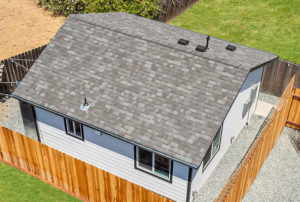





A link to download your FREE brochure will be in your inbox in 3 minutes



















The final price may vary based on project specifics.
To get a free accurate quote tailored to your needs, book a consultation with us today!

The price per square foot provided is an average and may vary depending on project-specific details such as materials, location, complexity, and other factors. Actual costs may differ from the average provided.
It is recommended to obtain a detailed quote based on the specific requirements of your project.

Please note that the monthly payment displayed on this page is an estimate and is subject to variation based on the selected loan product, applicants credit score, loan amount, and other financial details. Actual monthly payment may differ from the estimate provided.
It is recommended to seek advice from a financial advisor or loan officer to obtain precise payment information tailored to individual circumstances.
 Your Trusted
Local Contractor
Your Trusted
Local Contractor
 Choosing the right tiny house roof design is essential for both the aesthetics and functionality of your tiny home. With various roof styles available, it’s important to consider factors like weather resistance, energy efficiency, and maximizing living space. Here’s a guide to some of the most popular tiny house roofing options to help you decide on the best design for your needs.
Choosing the right tiny house roof design is essential for both the aesthetics and functionality of your tiny home. With various roof styles available, it’s important to consider factors like weather resistance, energy efficiency, and maximizing living space. Here’s a guide to some of the most popular tiny house roofing options to help you decide on the best design for your needs.
The gable roof is one of the most common and classic tiny house roof styles. Known for its triangular shape, it’s easy to construct and offers excellent snow runoff, making it ideal for areas with heavy snowfall. This roof style maximizes headroom in the loft, making it a great choice for tiny homes with upper-level sleeping areas.
The shed roof is a single-sloped roof, often used in modern tiny houses. This design provides a sleek and minimalist appearance and allows for better placement of solar panels on one side of the roof. Shed roofs are great for maximizing space inside the home, as they allow for higher ceilings on one side, perfect for a loft or storage space.
For those who prefer a modern architectural look, flat roofs are becoming increasingly popular in tiny house design. While they offer a sleek aesthetic, flat roofs can pose challenges in areas with rain or snow since water doesn’t naturally run off. Proper drainage systems are essential to prevent leaks and mold formation.
A gambrel roof is characterized by two different slopes on each side, similar to traditional barns. This roof style creates more headroom in the loft and is perfect for those looking to add a rustic touch to their tiny home.
When it comes to tiny house roofing materials, metal roofs are a popular option due to their durability and low maintenance needs. Metal roofing is lightweight, making it ideal for tiny houses on wheels, where minimizing weight is a key factor.
For those looking to embrace a sustainable tiny house lifestyle, green roofs offer a unique option. A green roof is covered with vegetation, which provides insulation and helps reduce energy costs.

When selecting roofing materials, consider durability, weight, and the climate where your tiny house will be located. Wood shingles, slate roofs, and metal roofing are all popular choices for their aesthetic appeal and functionality.
Choosing the right tiny house roof design can make a huge impact on both the look and functionality of your home. From classic gable roofs and modern shed roofs to eco-friendly green roofs, each option offers different benefits depending on your climate, aesthetic preferences, and budget. By selecting the right roof style and roofing material, you’ll ensure that your tiny home is ready to handle any weather while looking stylish and maximizing interior space.
Gable roofs are easy to construct and budget-friendly. They offer excellent snow runoff and maximize headroom in loft areas, making them ideal for tiny homes with upper-level sleeping spaces.
Shed roofs provide a sleek, modern appearance and allow for higher ceilings on one side, maximizing interior space. They’re also ideal for solar panel installation due to their single-sloped design.
Yes, metal roofs are durable, low-maintenance, and lightweight, making them ideal for tiny houses, especially those on wheels. They reflect sunlight, improving energy efficiency, and offer long-term durability.
Consider durability, weight, climate suitability, and aesthetics. Lightweight materials like metal are ideal for mobile homes, while wood shingles offer a rustic look but require more maintenance. Ensure the materials match your climate and mobility needs.
Get a First Look at Real ADU Projects